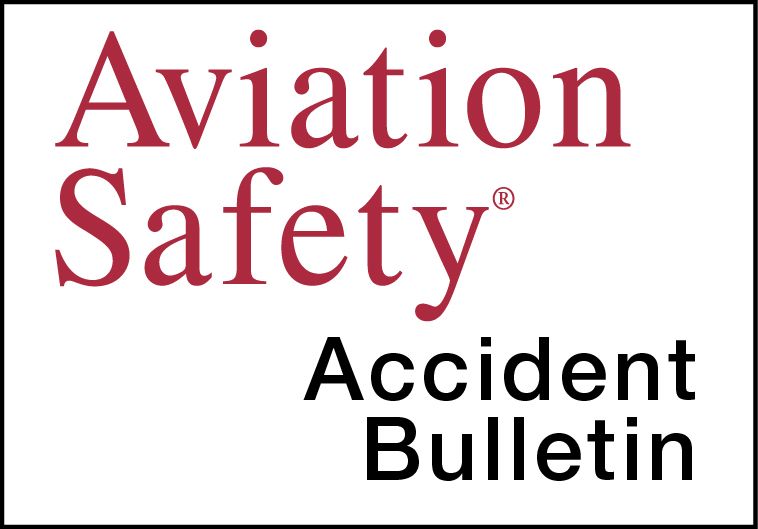AVweb’s General Aviation Accident Bulletin is taken from the pages of our sister publication, Aviation Safety magazine. All the reports listed here are preliminary and include only initial factual findings about crashes. You can learn more about the final probable cause on the NTSB’s website at www.ntsb.gov. Final reports appear about a year after the accident, although some take longer. Find out more about Aviation Safety at www.aviationsafetymagazine.com.
January 1, 2022, Southeast Arcadia, Fla.
Mooney M20C Ranger
At about 1211 Eastern daylight time, the airplane was substantially damaged during a forced landing. The private pilot and passenger were not injured. Visual conditions prevailed.
According to the pilot, he verified before takeoff there was sufficient fuel aboard for the flight. While on final approach to the destination and at about 300 to 400 feet AGL, the airplane “experienced some sink.” He attempted to add power but the engine did not respond. He verified four gallons of fuel were in the right tank, and the boost pump was ON, but the engine did not restart. Unable to make the runway, he performed a forced landing in a field, during which the right wing clipped a tree.
January 2, 2022, Montrose, Colo.
Zenith CH750 Experimental
The airplane was substantially damaged at about 1040 Mountain time during a forced landing. The solo pilot was uninjured. Visual conditions prevailed.
Before takeoff, the pilot added 24 gallons of mogas, sumped the fuel tanks and observed no contamination or water. About 30 minutes after departure and while cruising at about 10,500 feet MSL, he observed fuel pressure decrease from 44 psi to 39 psi. It increased to 40 psi, before decreasing to zero as the engine stopped producing power. For the next few minutes, fuel pressure and engine rpm fluctuated between normal and zero. Activating the backup fuel pump had no effect.
The pilot executed a forced landing to a snow-covered plateau. During the landing, the wheels dug into the snow and the airplane nosed over, resulting in wing damage.
January 2, 2022, Grand Forks, N.D.
Piper PA-24-250 Comanche 250
At about 1600 Central time, the airplane was substantially damaged in an intentional gear-up landing after apparent mechanical failure. The solo pilot was not injured.
The landing gear did not extend properly and the pilot’s attempts to use the emergency extension procedure were not successful. The pilot consulted a mechanic by radio to no avail as ATC confirmed the gear appeared to be “a few inches down from the retracted position.” During the emergency gear-up landing, the lower fuselage skin and substructure was damaged.
January 4, 2022, Matagorda Island, Texas
Aviat Aircraft A-1B Husky
The airplane was substantially damaged at about 1145 Central time during an attempted landing. The pilot and passenger were not injured.
The flight departed McAllen, Texas, at 1004 and flew to Matagorda Island. For undetermined reasons, the airplane landed on Matagorda Island, which does not have an operating airport. A photograph of the airplane depicted substantial damage to the right wing and the fuselage, and both main gear were collapsed.
January 8, 2022, Youngstown, Ohio
Cessna 172G Skyhawk
At about 1530 Eastern time, the airplane was force-landed on airport property following engine failure. The private pilot and two passengers were not injured. Visual conditions prevailed.
The flight’s purpose was to verify operation of newly installed ADS-B equipment. After completing the tests, the pilot entered the downwind leg and, at the midfield point, added a notch of flaps and applied full carburetor heat. The engine then “stumbled and quit.” Attempts to restart the engine were unsuccessful. The pilot added full flaps and turned toward the runway. He later reported he was too high to touch down; the airplane “floated long” and came to rest in trees on airport property, sustaining damage to the left wing and fuselage. The three occupants egressed the airplane without further incident. The airplane was STC’d to use mogas, with which the pilot fueled it before the accident flight.
January 8, 2022, Defiance, MO
Beechcraft 58 Baron
The airplane was destroyed at about 1919 Central time when it collided with terrain, apparently out of control. The two commercial pilots sustained fatal injuries. Instrument conditions prevailed and an IFR flight plan had been filed for the positioning flight.
The airplane departed St Louis, Missouri, at 1910, en route to Denver, Colorado. After climbing to 8000 feet MSL on a westerly heading, the airplane entered a gradual left turn to the southeast and began descending. The controller queried the pilots but heard only a jumbled radio transmission. No distress call was received. The final 10 seconds of ADS-B data show the airplane descended from 7500 to 4700 feet MSL. It impacted forested terrain on a westerly heading at high speed, leaving a debris path about 320 yards long.
January 11, 2022, Edisto Island, S.C.
Piper PA-32-300 Cherokee Six
At about 1247 Eastern time, the airplane was substantially damaged during an off-airport landing following engine failure. The solo private pilot was not injured. Visual conditions prevailed.
About 15 minutes after an en route fuel stop and while cruising at 4500 feet MSL, the engine started to sputter, then stopped, followed by oil blowing out from the engine cowling onto the windshield, partially limiting the pilot’s view. He observed a straight road between two fields out of his side window and headed that way. After setting up to land on the road, he observed an electrified livestock fence on both sides, but he was committed. After touching down, both wings struck the fence, causing the airplane to veer to the right, through the fence and into a field for about 300 feet before coming to rest. Examination revealed a hole on the top of the engine near the No. 6 cylinder.
This article originally appeared in the April 2022 issue of Aviation Safety magazine.
For more great content like this, subscribe to Aviation Safety!


































